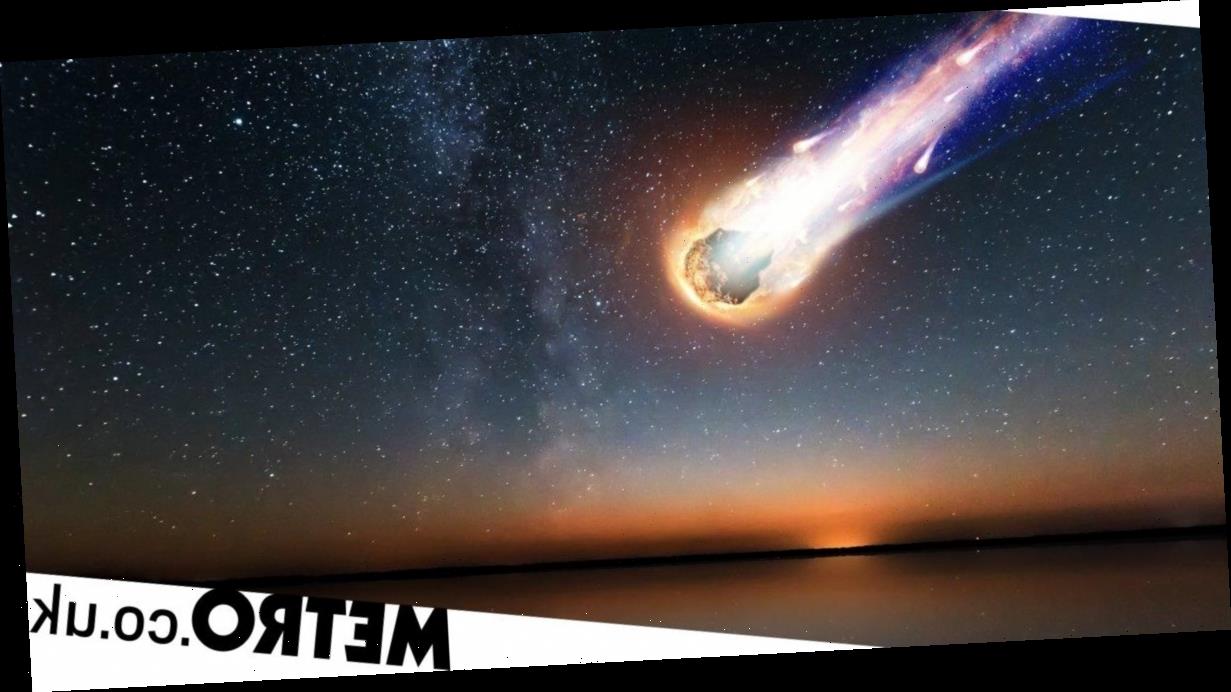The American space agency is keeping a close eye on a massive asteroid that could eventually smash into Earth.
The asteroid, known as JF1 is designated a ‘near-Earth object’ (NEO) meaning it orbits the sun and comes close enough to our planet to cause concern.
‘Some asteroids and comets follow orbital paths that take them much closer to the Sun and therefore Earth – than usual,’ Nasa explained. ‘If a comet’s or asteroid’s approach brings it to within 1.3 astronomical units of the Sun, we call it a Near-Earth object.’
Experts believe that JF1 measures around 130 meters in diameter – and believe it’s about the size of the Great Pyramid of Giza in Egypt.
The asteroid JF1 was first discovered back in 2009 and Nasa’s Jet Propulsion Laboratory has been watching it for the last decade. The space agency has tasked its automated asteroid watching system – known as Sentry – with keeping an eye on it.
‘Sentry is a highly automated collision monitoring system that continually scans the most current asteroid catalogue for possibilities of future impact with Earth over the next 100 years,’ Nasa said.
They believe, were it to strike Earth, it would be the equivalent to detonating 230 kilotonnes of TNT. That kind of a detonation would dwarf the force of the Hiroshima atomic bomb in 1945, which exploded with the force of 15 kilotonnes of TNT.
‘Larger NEOs greater than 140 meters would have the potential to inflict severe damage to entire regions or contents,’ explained a 2018 report delivered to the White House on the dangers of an asteroid impact.
“Such objects would strike Earth with a minimum energy of over 60 megatons of TNT, which is more than the most powerful nuclear device ever tested. Fortunately, these are far less common and are easier to detect and track than smaller NEOs.’
Because of the danger of a future collision, space agencies around the world are developing ways to avert a possible extinction event.
Researchers and spacecraft engineers from across Europe and the US are working on a mission to ‘deflect’ a space rock and ‘prove the technique as a viable method of planetary defence’.
This mission is called the Asteroid Impact Deflection Assessment (AIDA) and will attempt to redirect the smaller part of a pre-selected double asteroid called Didymos.
In the first stage of the mission, a spacecraft will smash into the space rock. Then a second ship will assess the crash site and gather data on the effects of the collision.
Nasa is already working on a craft called Double Asteroid Impact Test, whilst Italy will send a small CubeSat satellite to monitor the action.
The European Space Agency (ESA) mission is called Hera and will perform a ‘close-up survey of the post-impact asteroid’ and gather measurements such as the asteroid’s mass as well as the size of the crater left behind after impact.
‘DART can perform its mission without Hera – the effect of its impact on the asteroid’s orbit will be measurable using Earth ground-based observatories alone,’ said Ian Carnelli, who is managing the Hera mission.
‘But flying the two missions together will greatly magnify their overall knowledge return. Hera will in fact gather essential data to turn this one-off experiment into an asteroid deflection technique applicable to other asteroids. Hera will also be the first mission to rendezvous with a binary asteroid system, a mysterious class of object believed to make up around 15% of all known asteroids.
‘And our mission will test a variety of important new technologies, including deep space CubeSats, inter-satellite links and autonomous image-based navigation techniques, while also providing us with valuable experience of low-gravity operations.’
However, statistics still show that the chances of an impact from JF1 remain low.
Despite the asteroid’s terrifying dimensions and breakneck pace, the odds of an impact are fairly low.
Nasa believes there is a one in 3,800 odds the asteroid will hit Earth on the expected date of May 6, 2022. That translates into a 0.026% chance of an and a greater than 99% chance it will miss Earth.
Source: Read Full Article

